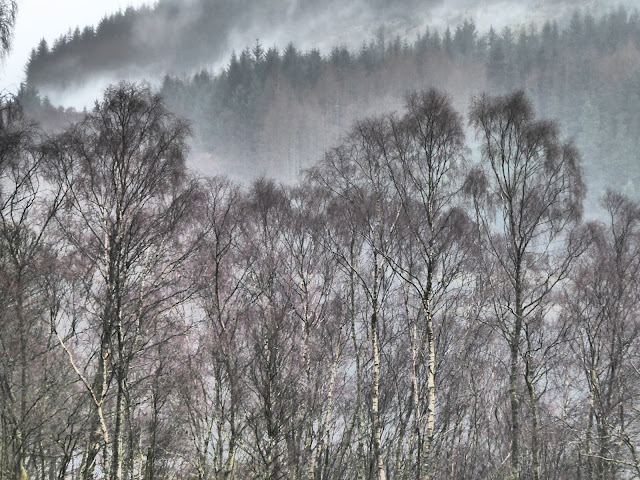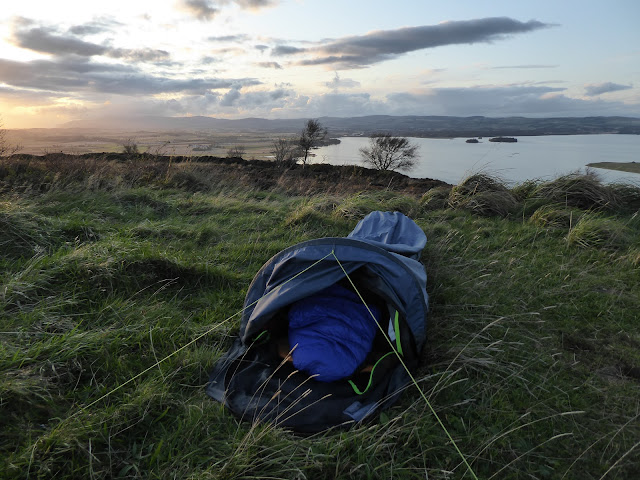With the COVID travel restrictions eased for Christmas Day and my decision made to not mix with other households, an alternative Christmas beckoned in the hills, especially as tighter restrictions were moving in from Boxing Day. So my extended household and I headed to the Trossachs.
We arrived into a cold, grey day with a ceiling of low cloud that blocked out the sun and kept the day in a perpetual twilight, so characteristic of this time of year. Throughout our walk showers of fine rain would gather in the west around the slopes of Ben Venue then sweep east across the valley, soaking our jackets, trousers and rucksacks but leaving sparkling beads of water on tree twigs. As the weather shifted at moments, huge banks of dense, white mist billowed up the valley like a slow-moving avalanche and we watched it, mesmerised. But splashes of colour were added to this dreich day by the birch trees and the withered bracken. Of course, this is the kind of day I love when the elements are all around me.
Our walk climbed steeply from the shore of Loch Vennachar on a path that was heavily iced up. This was welcome because the wet second half of the year has turned everywhere to bog but the frozen ground was much easier to walk on. Mind you, there were still some pockets of unfrozen ground and it was impossible to tell until you stepped onto the boggy bits if they were frozen and would hold your weight. On this icy path, we ascended up through beautiful oak and birch woods, eventually popping out above the trees into what felt like a secret world, hidden up in the mist.
Our route made a high traverse west next, through a pleasant landscape of heathery knolls, to eventually emerge above Glen Finglas. The sun very briefly broke through the clouds here and illuminated the woods that carpeted the hillside, bringing out the purple and orange hues of the winter trees. Two deer ran by and a snipe exploded from the undergrowth. We dropped down the hill now to briefly pick up the glen road and walk by the cottages that we’d seen from the hill above. Their chimneys puffed smoke from cosy fires inside.
A network of trails took us back through the woods and to the water’s edge at Loch Vennachar. We walked through Little Druim Wood on the way which was dotted with art sculptures including a beautiful deer whose open metal structure seemed to emerge from the forest itself.
At the loch shore, I pitched the outer cover of one of my tents to make a shelter from the rain and laid out a groundsheet for sitting on. Here we watched what daylight there was fade into night. The geese out on the water were the only sound that drifted to us as we cooked a Christmas dinner on our camp stoves – soup with bread, curry with rice and tea with Christmas cake.
Then it was time to pack up and walk back through the night-time woods.
Start/finish: Woodlands Trust visitor centre Glen Finglas near Brig o'Turk
Public transport: In normal times and not on Christmas Day, I take a bus from Stirling to Callander and use the Great Trossachs Path to reach Glen Finglas.
Route: Centre is closed currently due to Covid but there are numerous paths and routes in the area detailed on noticeboards outside or here.




















































